Nagaland – Culture and Tradition
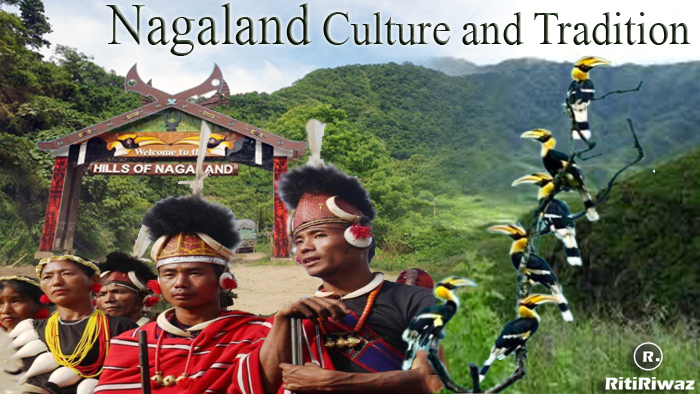
Nagaland is a northeastern state of India and is one of the smallest states also called “The Switzerland of the East“. It is bordered by Assam in the west and north, Myanmar in the east and Burma, Arunachal Pradesh in the north, and Manipur in the south. Nagaland is situated in a narrow strip of the mountainous area between the Brahmaputra Valley and Burma.
Kohima is the capital of Nagaland and the largest city is Dimapur. There are mountains of Barel and Jamphu in the state and among the mountain peaks are Saramati, Jaffu, and Kohima. Jhanjhi, Melak, Doyong, Dikhu, Teeju, Dhansiri rivers are prominent in the state. There is also Lechham Lake. About 68 percent of the people of Nagaland depend on agriculture. The principal crops grown here are potatoes, rice, pulses, corn, tobacco, millets, corn, sugarcane, oilseeds, and fibers. Jhumming cultivation is prevalent in the state which is now leading to the erosion of soil and loss of soil fertility.
Originally Nagas reside in Nagaland and the social structure of all Naga tribe groups is different from one to another. Nagaland is the only state whose population declined between 2001 and 2011.
History
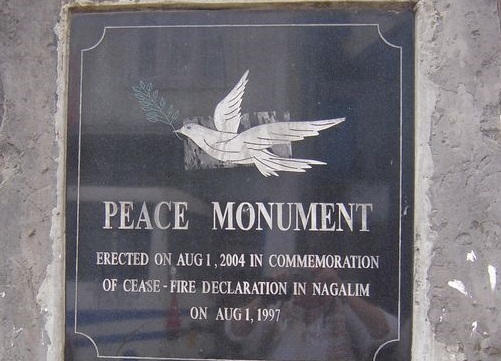
There is very little information about the early history of the region that is Nagaland today, while the Ahom kingdom in the 12th and 13th centuries of neighboring Assam state referred to the Naga community, their economy, and customs.
When the Burmese of Myanmar invaded Assam in 1816, it resulted in the foundation of the oppressive Burman regime in 1819 and this rule lasted until the establishment of British rule in Assam in 1826, and the traditional practice of hand hunting was outlawed. During World War II in 1944, the British and Indian armies together defeated the Japanese forces in the “Battle of Kohima”
After the independence of India in 1947, the Naga community settled in a small part of Assam. However, through a strong national campaign, a political association of the Naga community was also demanded. This campaign led to many violent activities and in 1955 the Indian Army was also ordered to restore order.
After forming an agreement between the Naga leader and the Government of India in 1957, the Nagas residing in the mountainous regions of Assam and the Nagas of the Tuensang Frontier Division were brought under one roof in the administration of the Government of India and came to be known as Naga Hills Twensang. Despite the agreement, the Indian government started getting intoxicating, refusing to pay taxes, sabotaging, and attacking the army.
In 1960, a meeting of the Naga people was held that Nagaland should be a part of the Indian Union. Naga Hills Twensang was renamed Nagaland in 1961 and Nagaland was given statehood on 01 December 1963 and in 1964 the office was established democratically.
Insurgent activities continued, with the number of dacoits in the area also increasing. The rebellion was stopped for some time by bargaining, and in March 1975, a direct presidential rule was imposed on the state.
A powerful pro-separatist extremist group, the National Socialist Council of Nagaland was established in 1980.
Language
As much linguistic diversity as there is in Nagaland, hardly any other diversity in India will be. Naga people use about 36 different languages and dialects. The major languages here are Angami, Aao, Chang, Konyak, Lotha, Sangmat, and Sema. The majority of the people of Nagaland speak Indian English which is the official language of this state.
Religion
Nagaland is known as “the only predominantly Baptist state in the world” and “the most Baptist state in the world”. Christianity is the predominant religion in the state with about 98% of Naga people being Christian, while only 7.7% are Hindu and 0.5% are Muslims.
Culture
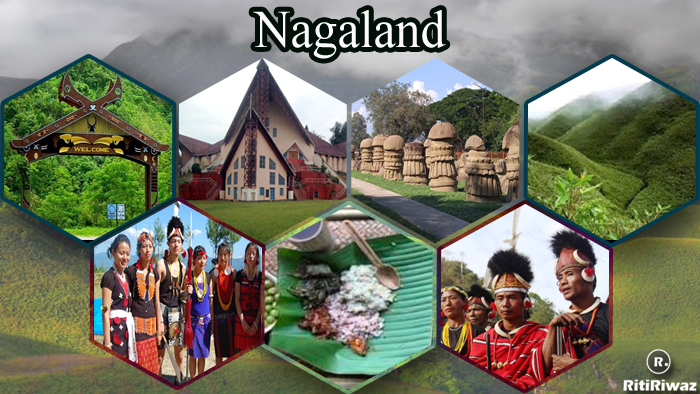
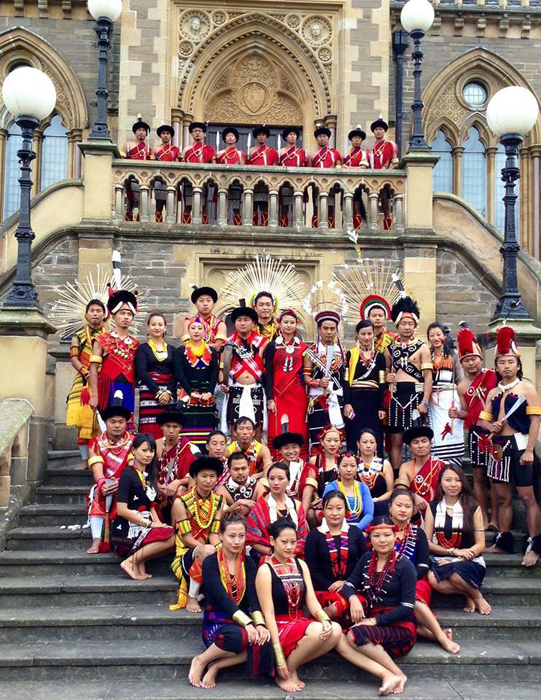
The ethnicity of Nagaland is a mixture of many tribes and sub-tribe groups, this community dates back to very ancient times. The social structure of all Naga tribe groups is different from one to another. The customs, festivals, and beliefs of all communities make them different from each other. The Naga community has a rich cultural heritage. They have been living harmoniously in the state for centuries, and ethnic communities have developed a vibrant stage of cultural mobility here.
Nagaland has 16 main tribes residing in Angami, Au, Chakseng, Chang, Dimasa Kachari, Khianyugam, Konyak, Lotha, Foam, Rengma, Sangatam, Sumi, Yimchunger Kuki, and Jeliang. The Konyak, Angami, Aos, Lothas, and Sumi are the largest Naga, tribes. The tribe living in the rural part of Nagaland has preserved the old customs and rituals. They are known for friendly behavior and hard work, Nagaland people have contributed significantly to the socio-cultural development of the state. The culture of Nagaland is reflected in the Hornibal festival.
Suggested Read: Culture and Tradition of Indian States
Cuisine
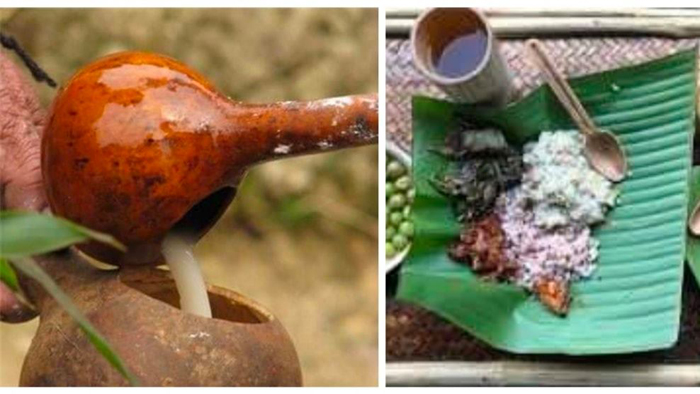
Rice is the staple food of the Naga tribe eaten with meat or vegetables. Naga people are very interested in eating chili and semus. Rice is the main carbohydrate in their food and they prefer boiled vegetable dishes and a meat dish with a chutney/pickle (Tathu) made using bamboo shoots and beans.
Dried/smoked meat plays an important role in cuisine and has practical significance for sustenance farmers/foragers and hunters. The Nagas try the meats of almost a huge variety of animals and birds, some being pork, chicken, beef, fish, cats, dog, birds, crabs, spiders, and many more. Fish rice, bamboo shoot fry, and roasted duck are some of the common food items.
Their food is spicy as there are different varieties of chilies in Nagaland along with a lot of ginger and garlic used in cooking dishes. Sichuan pepper is also a popular spice used by the Nagas. Fermented bamboo shoot with pork and fish is a very common dish in Nagaland.
‘Koat pitha’ is a typical Naga sweet dish made with rice flour, bananas, and jaggery. The most common local drink of the Naga tribes is rice beer, which is again of three categories, namely Zutho, Ruhi, and Dzutse.
Suggested Read: Famous Food Of Indian States
Costume
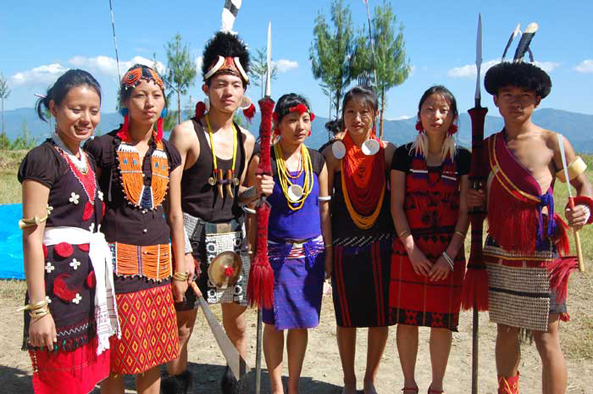
The Nagas like rainbow designs and they give priority to their tradition and culture. The traditional Nagaland costumes seem very attractive and colorful. The decorative shawls of Nagaland are very popular in their traditional dresses. It is one of the prominent and widely seen dresses of Nagaland which differs from tribe to tribe. The shawl design signifies the social status of the person. The ornate warrior-celebrating shawl, called ‘Tsungkotepsu’ is a characteristic of the Aos clan.
The common costume is a white cloth with six black bands at both ends. The costume of the Zemei women is restricted to white-colored clothes and skirts with a very narrow black and red border. The casual costume of a dress of Angami women includes a petticoat called ‘Neikhro’, a sleeveless top called ‘Vatchi’, and a white skirt called ‘Pfemhou’. The Ze-liangs-rong, a mixed group of Zemis, Liangmais, and Rongmei exhibit themselves in costumes, considerably the same as that of the Angami tribe.
Ao women wear a skirt that is one and a quarter meters long and about two-thirds of the meter is draped around the waist and the surface outer edge is implanted for the grip. Ao skirts involve ‘Azu jangnup su’, endowed with red and yellow-black stripes, the ‘Ngami su’ or fishtail skirt, and finally, the ‘Yongzujangau’ or cucumber seed skirt, woven in red on a black base.
Other than the shawl, the kilt is the dress worn by the males of the state which is generally black in color and embroidered with cowries. Naga males wear red headgear along with black hornbill, decorated with canine teeth of wild boar and white feathers.
Suggested Read: Traditional Dresses Of Indian States
Dance and Music
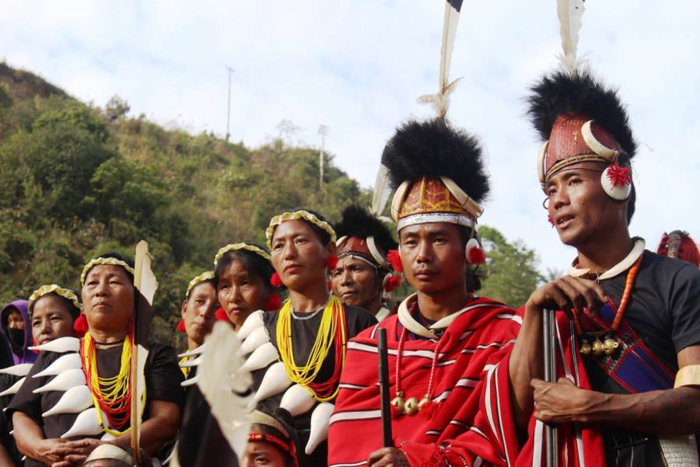
Music and dance are fundamental parts of the life of the state. There are feasts, dancing, and gaiety at every festival. Folk songs and folk songs that sing valor, beauty, love, and generosity have been passed down from generation to generation. The dance is usually performed in groups and is perfectly synchronized with music through various musical instruments such as Asem (drums), Tati, Mouth Organ, Bamboo Flute, etc.
The traditional dance practice becomes more colorful and vibrant with their unique jewelry and costumes. The folk songs tell the story of bravery, historic incidents, and romance. Their dance and songs will set your feet tapping which the tourist cherishes and enjoy the most.
Fair and Festival
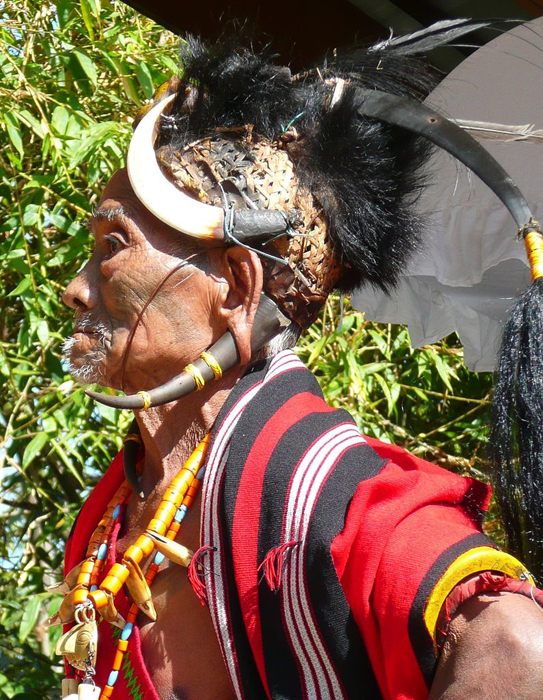
The festivals of Nagaland are mostly related to agriculture where people gather and celebrate the festivals with gaiety. All the people of the community enthusiastically participate in the festival and all the festivals of the state are celebrated with great fanfare.
Important festivals of the state include Sekrenyi, Moatsu, Tokku Angoma, and Tulani. The Government of Nagaland started organizing the Hornibal festival in 2000, which is held every year from 1 to 7 December. The Hornbill festival here is named after the bird Hornibal, which is the state bird of this place.
Hornbill festival is the best chance to view the wide assortment of Naga nourishment, painstaking work, tunes, moves, and traditions of Nagaland and, as the celebration is gone to by all the significant clans of Nagaland and society of Naga people.
Art and Craft
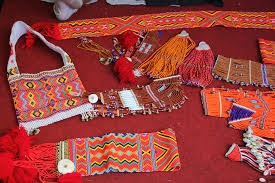
The tribes of Nagaland are experts in making handicraft products like bamboo work, woodcarving, blacksmithy, and pottery. Cottage industries like woodwork and weaving are also a source of revenue for the people.
Nagaland is famous for its shawls weaving with special patterns and motifs. You can see the excellent wood carving in Wanchoo, Konyak, and Phom tribes which is also done in cane and bamboo carving. Pottery is done with sticky plastic light brown clay and is exclusively the art of women. Blacksmithy crafts are also very popular in the area.
Famous People
-
Neiphiu Rio, former CM of Nagaland
-
Neidonuo Angami, Social Worker
-
Melhupra Vero, Indian Politician
-
P. Kilemsungla, Indian Educationist
Tourism
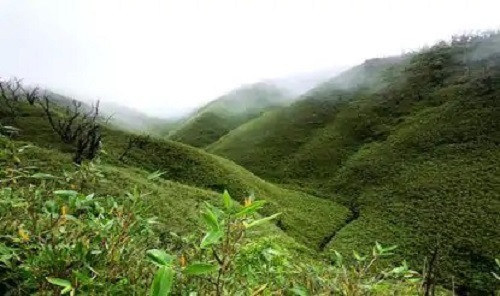
Nagaland is a beautiful place with high peaks, and vast forest lands and is filled with aesthetic beauty, that’s why it is often called – “The Switzerland of the East”. Places of interest in Nagaland reflect the rich cultural heritage of the state. Khonoma Gate is one such place that is a symbol of the bravery of Khonoma village. The people had built the gate to get protection from the Britishers and this is the reason that people all across the world come to see it. Japfu Peak, Dzukou Valley, Tuli town Naganimora, Meluri, and Changtongya are other famous places in the state which have aesthetic beauty and a positive vibe to rejuvenate the visitors coming here.
Kohima – Places to visit here are Kohima Museum, Ohima Village, Dozhu Koi Valley, Lung Dham Village, Mata Yimi Kyang, the coldest place in the state, Fftsero, etc. 15 km from Kohima is Jaffu Peak in the south. The tree named Rodo Dredon is found in the mountain ranges here. Their height is the highest in the world. Hence his name is recorded in the Guinness Book of Records. Apart from these, other tourist places of Kohima are Zukoye Valley, Shilloy Lake, State Museum, World War II Cemetery, Heritage Museum, Khonoma Village, Kohima Janthalaya, Intaki Wildlife Sanctuary, etc.
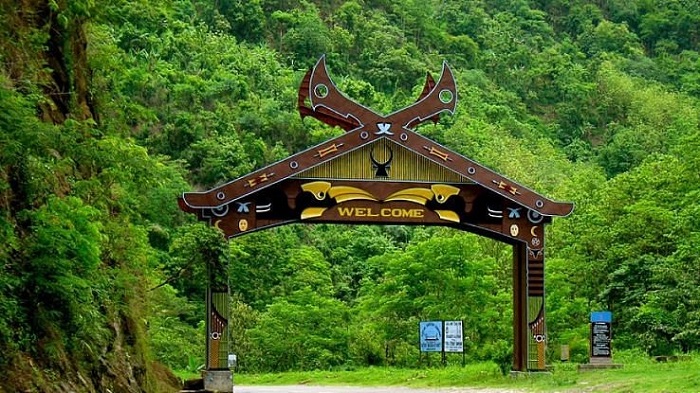
Dimapur – Dimapur is the gateway and economic center of Nagaland. This place for nature lovers is like heaven where the mind gets fascinated by seeing the scenery. For history lovers, here you can see a glimpse of the 10th century in the Kachari Khadon. Apart from this, Dimapur Wildlife Park, Green Park Rangafar Reserve Forest, Dezef Craft Village, Handloom and Handicraft Emporium, and Bapist Church are the main attraction centers.
Mokokchuang – Mokokchuang can also be called the cultural capital of Nagaland, which is also an important district of Nagaland. The sweet sound of the springs covered with green hills will enchant you here. This traditional land blossoms at festivals. Although most of the tribes of this place have adopted Christianity, even here they can still see their tribal qualities in them. Among the main attraction centers of this place are Changkikong Range, Langpangkong Cave, Changtongya, Mokokchuang Park, Mokokchuang Museum, etc.
Wokha – You can feel the ethnic residence in Wokha, the abode of Lotha tribe. This place is full of flow where many fruits like pineapple, and orange are planted. The special thing about this place is that the cultivation here is done in an organic way without using pesticides. Nature lovers can enjoy the roads passing through dense forests here. Here are the major tourist places of Mount Tiyi, Tehaurang Valley, Doyang River, Totsu Woju Lake, etc.
Mon – Located at an altitude of 897 meters above sea level, Mon is a breathtaking place in Nagaland that will give you a mysterious feeling. From here you can see the beautiful views of the plains of Assam. Apart from this, Longwa village, Chui village, and Shanagyun village are places to see.






